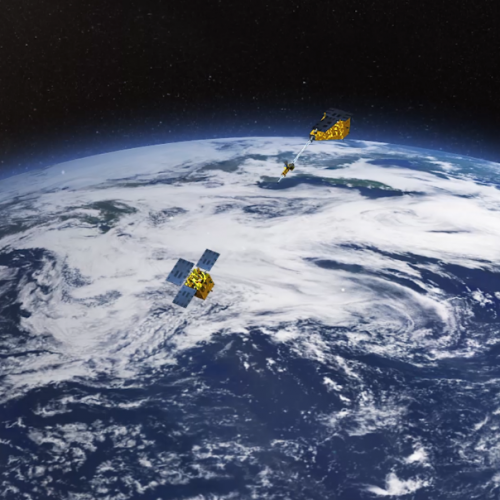


After six months of in-orbit trial operations, the Macao Science Satellite 1A and 1B satellites started formal operations on Tuesday.
Developed jointly by scientists from the Chinese mainland and Macao, they were put into orbit on May 21 by a Long March 2C rocket launched from the Jiuquan Satellite Launch Center in northwestern China's Gobi Desert.
During the past six months, the two satellites carried out a host of capability tests and worked well. Engineers compared their scientific data with information obtained by other spacecraft and data models and concluded that their mission payloads were working well.
Earlier this month, mission planners and experts from the China National Space Administration's Earth Observation and Data Center and the Macao University of Science and Technology reviewed the satellites' performance and decided they should start formal operations.
The satellite platforms were designed and built by the China Academy of Space Technology in Beijing and Northwestern Polytechnical University in Xi'an, Shaanxi province. The scientific equipment on the satellites, including a vector field magnetometer, an energetic electron spectrometer, a coupled dark state magnetometer and a solar X-ray detector, were provided by the State Key Laboratory of Lunar and Planetary Science at the Macao University of Science and Technology.
The two spacecraft are tasked with obtaining data on different layers in the South Atlantic by detecting the geomagnetic anomaly area, studying the origin and evolution of the geomagnetic field and the geomagnetic inversion mechanism, and drawing a high-precision and high-resolution geomagnetic map of the Earth's crust.
Their missions also include providing basic data for resource surveys and deep mineral development, and obtaining high-energy electronic information on the inner radiation zone over the South Atlantic.
The spacecraft are the world's first scientific satellites to be put into a near-equatorial orbit to study the space environment and geomagnetic field, specifically the South Atlantic Anomaly, from outer space.
The South Atlantic Anomaly is an area with a significantly weakened geomagnetic field and an associated increase in radiation activity. Its center lies off the coast of Brazil.
The scientific data will be used to improve the operational safety of spacecraft, space weather forecasting and research, and study the lithospheric magnetic field and the origin of the geomagnetic field.
If you have any problems with this article, please contact us at app@chinadaily.com.cn and we'll immediately get back to you.